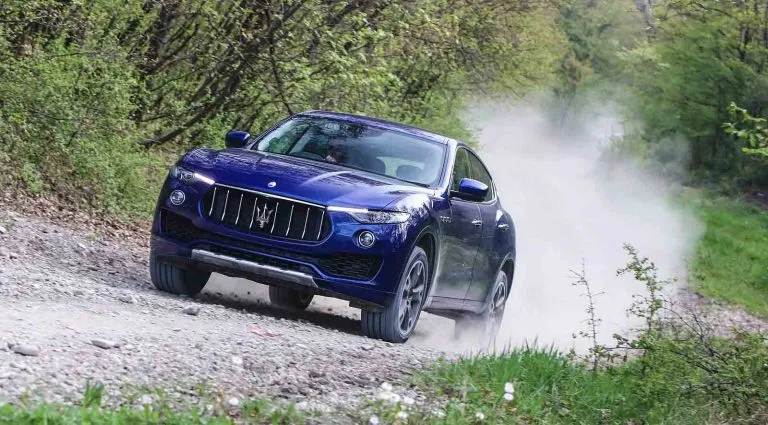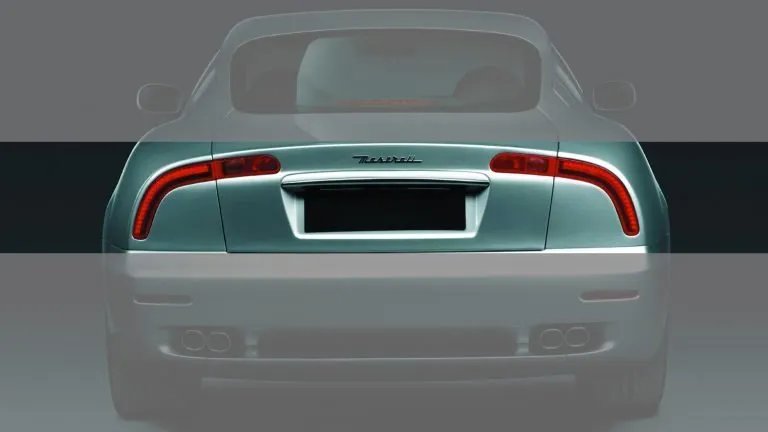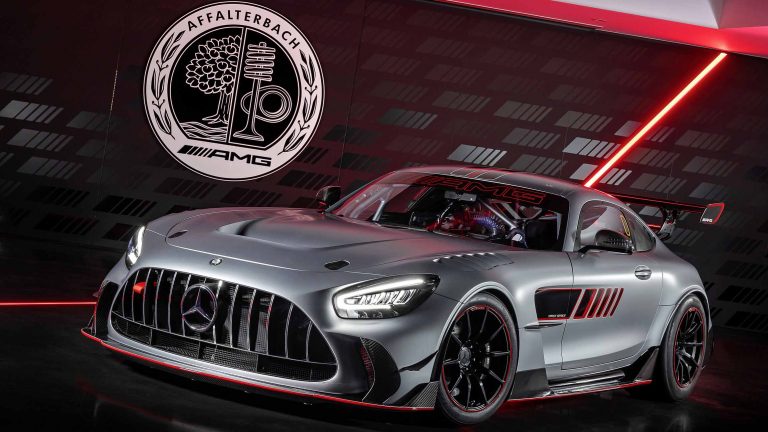2006 Maserati Quattroporte Review – Trident Class
Three years into the production of their four-door luxury sedan and things were going pretty well. Maserati were beginning to realize some of their business goals already. While FIAT had bought the company back in 1993, they had sold 50% of the company to their “stablemate”, Ferrari, three years later. The ‘Prancing Horse’ had big ideas for Maserati as they wanted this to be their luxury arm of their fleet.
Their first real car to be released by them was the Maserati Coupe and Maserati Spyder which, they were so confident on, they reintroduced the brand back into America. Now heavily relying on quality hardware and technology from Ferrari, the setup for these new cars was worlds apart from what they had produced previously.
Their plans included a major increase in the Modena factory’s output (this was helped by a US$60M renovation of the factory), pushing it forward from an exclusive bespoke automobile to something that could compete with the other luxury brands of Germany and the UK. To help them realize these goals, they brought onboard Karl-Heinz Kalbfell. The previous head honcho of BMW would have an eye for quality control, global branding as well as a general upscaling of Maserati.
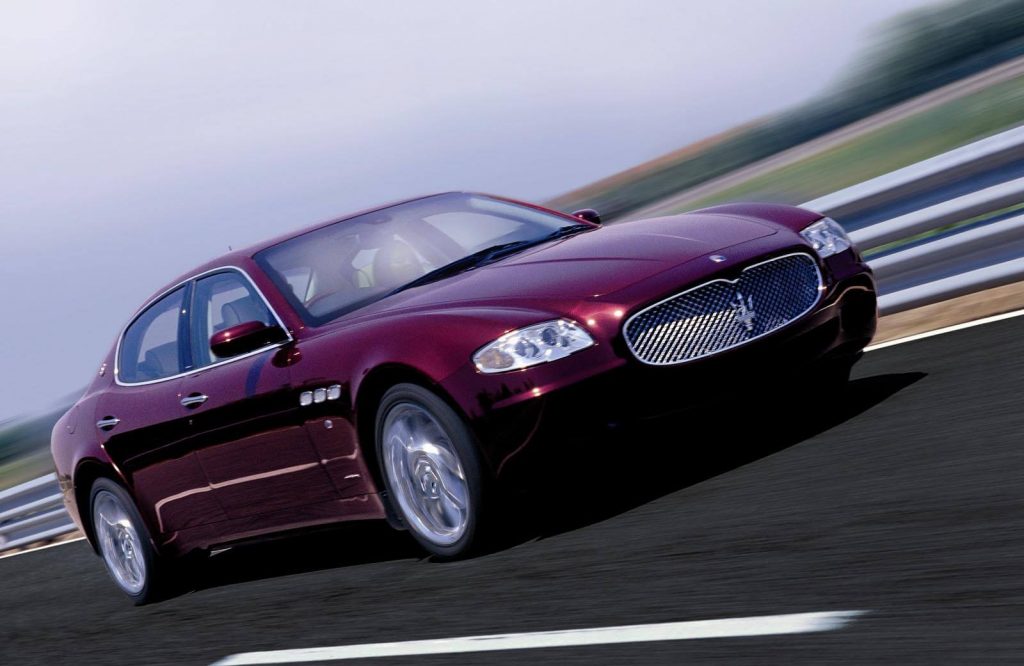
All these key areas would be achieved, especially, with the updated edition of their four-door. The 2006 Maserati Quattroporte V had 5,000 models built alone, that year, and proved the Trident was on its way to success. Despite the, relative; high numbers being manufactured, the level of workmanship had improved greatly. Reviewers, at the time, remarked how well the interiors were put together.
By now, Maserati were offering the 2006 Maserati Quattroporte in three models: the Base; the Executive GT (more luxurious trim) and the Sport GT (as it says on the tin).
One Engine to Rule Them All
Although there were now three models of the 2006 Maserati Quattroporte to choose from, they all carried the same engine under the hood. This was still the same engine they had first used on their initial project, the Coupe and the Spyder. The 4.2 liter V8 Ferrari engine delivered great power with 395 bhp at 7,000 rpm and 333 lb-ft of torque at 4,500 rpm. The heavy 4,255 lb automobile with a length of almost 200 inches (16.6 ft!) could go from 0-60 mph in just 5,2 seconds and hit a top speed of 171 mph.
The engine note is especially satisfying, as the ferocious V8 roar erupts even when hitting moderate revs and, at full tilt, is still sonorous against the wind noise. The heavy big engined car is thirsty and is gauged at giving fuel economy of 12 mpg for city driving and up to 18 mpg on highways.
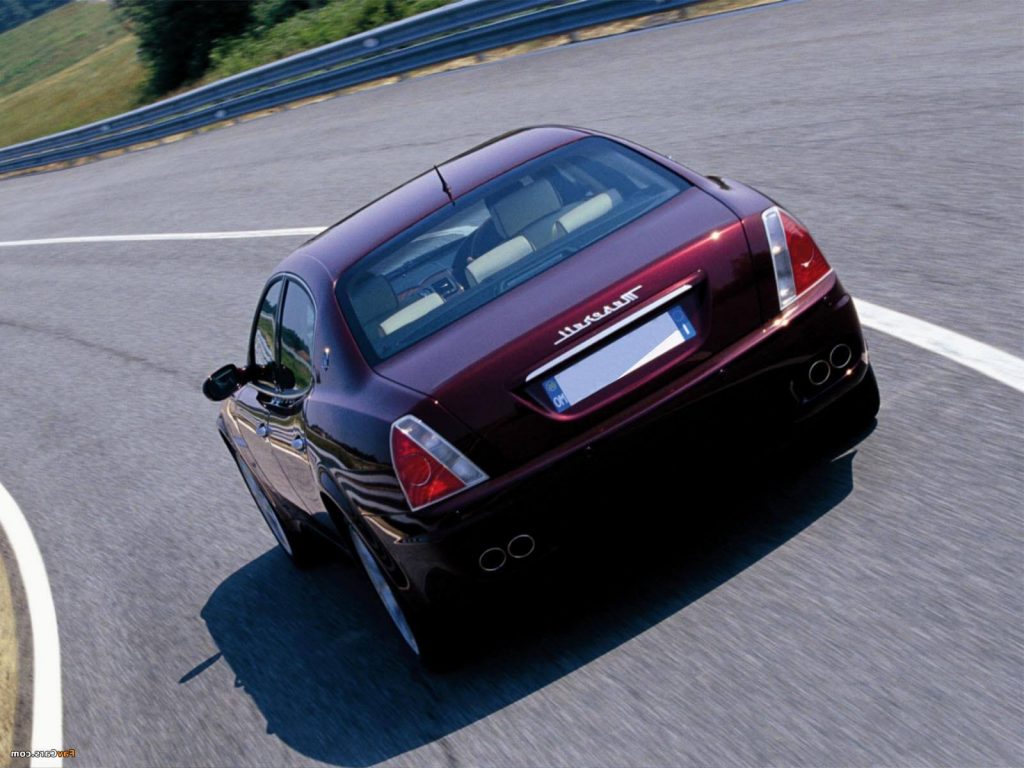
“Look Ma, No Hands!”
Similarly, there would be just one option for the transmission, the six-speed automated manual gearbox, that was known as DuoSelect. This Ferrari built transmission would confound many new owners and Maserati were already in the process to create a proper automatic gearbox for future models.
There was no gear stick, as such, with ‘Reverse’ being selected by a small lever in the central consul and there was no “Park” at all. The driver had the choice of leaving all shift changes automated by the car or by using the shift paddles situated on the steering wheel Reviewers had found that, at low speeds and very high speeds, the gear selection worked quite well. But for driving speeds between this, there were noticeable lags between upshifts and downshifting could be abrupt.
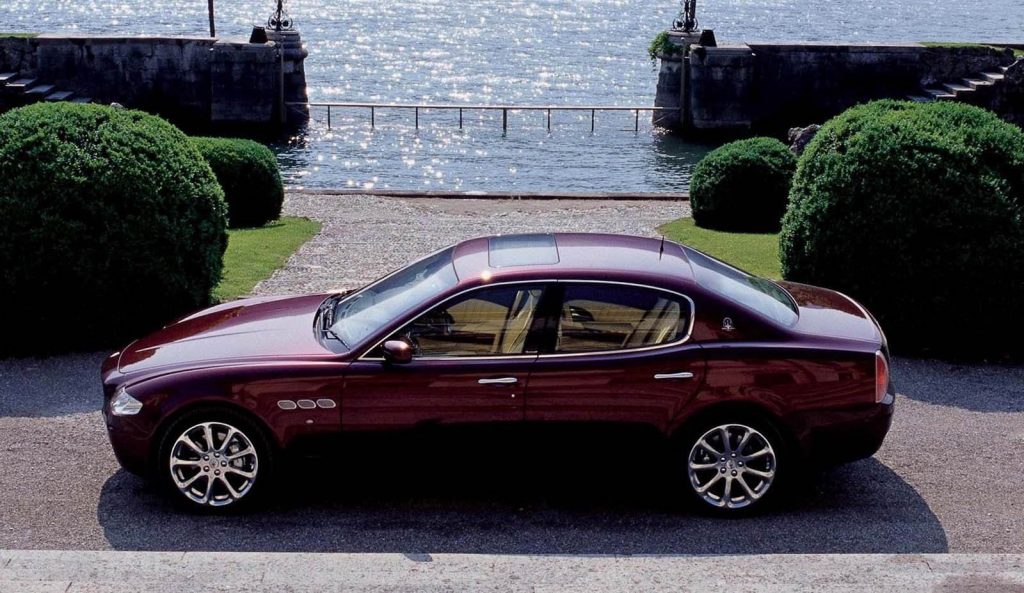
To enjoy the car at its best performance, it was advised to engage the ‘Manual’ mode so that the driver had total control over the shift changes via the shift paddles. This would bring the revs up higher and brings out the sportier nature of the sedan.
The 2006 Maserati Quattroporte Sport GT would have a better calibrated transmission to give it a more “racier” feel. Gear changes had been quickened by 35% and generally operated a little smoother than the Base model.
Turn on a Dime
The 2006 Maserati Quattroporte scored big kudos with its precision handling on the road. For those lucky enough to drive one, they claimed that the car had great poise and balance on the straightaway and long curves. Even at very high speeds (140 mph +) the QP5 steered attentively and sat on the road well.
A lot of this would be achieved by taking design advice from Ferrari and pushing the weight distribution ratio to the rear. With the engine block sitting just behind the front axle and the transmission over the axle of the rear wheel drive, it would create a ratio of 47/53. This would allow the car to maintain great balance at high speeds and in turns with minimal understeer or body roll.
However, the Base model could not replicate a nippy GT experience in very tight cornering and hairpin bends, as it became more sluggish in its response. Though reviews for the new Sport GT found that this performed much better in those situations.
Smooth Ride at all Times
Another key piece of equipment that ensured great handling was the new adaptive suspension. All models of the 2006 Maserati Quattroporte would be installed with the ‘Skyhook’ adaptive suspension system. With intuitive springs and dampers working separately on each wheel, it ensured the car was always well balanced and negating any unnecessary body roll.
When driven more aggressively, engaging the ‘Sport’ mode on the transmission will automatically firm up the suspension in anticipation of what was to come. It would only take the ‘Skyhook’ 25 milliseconds to counteract anything it felt on the road regarding the surface conditions or over assertive driving. The Sport GT would have the suspension even more attuned and calibrated in preparation for its “edgier” ride.
To aid the driver, there was a stability program, installed from Bosch, that would apply braking individually or cut engine power in case the ride was getting too “exciting”.
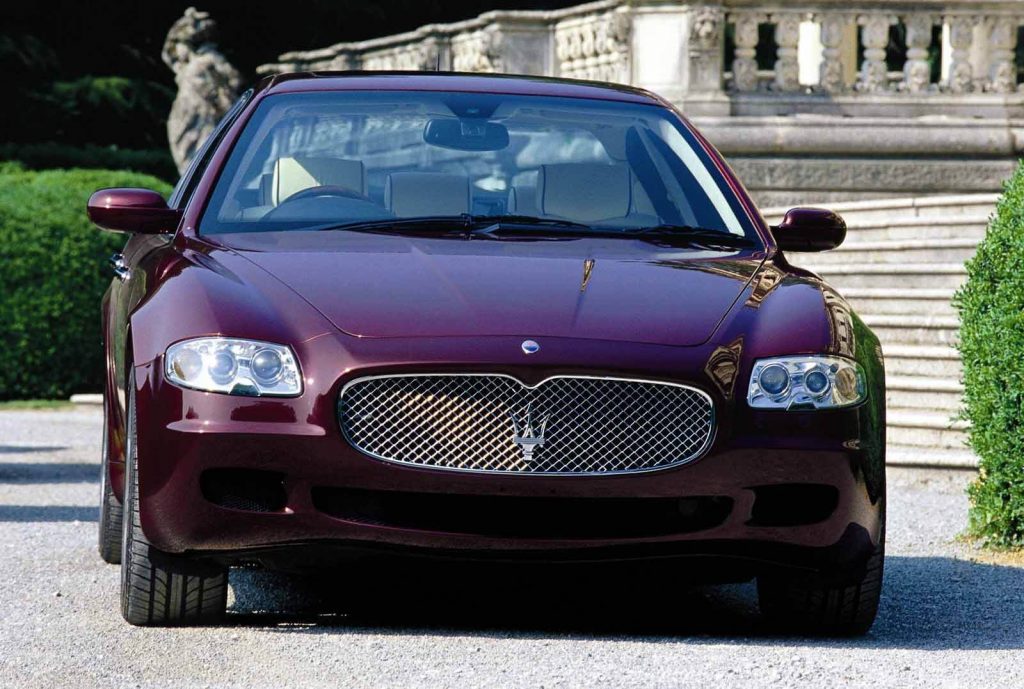
Luxury is Standard
Regardless of what 2006 Maserati Quattroporte model was bought, the level of sumptuous luxury and elegance was set at a very high bar. The finest Poltrona Frau leather covers almost everything, from the well padded executive front and rear seats, dash and door panels. Though Poltrona Frau distribute their leather to many car manufacturers, they reserve their finest hides for just two car makers – Ferrari and Maserati.
The buyer is given a choice of ten different colors for the leather and this is complemented by 13 different colors for thread that are used for the piping and hand stitching.
To offset their iconic oval analog clock on the dash, they have a choice of three wood finishes (in Mahogany, Rosewood or Briarwood) or titanium.
On the exterior, there are a selection of 15 different paints to apply to the bodywork giving the new owner a chance to feel like an Italian artist with a full color palette to choose from.
Not Quite so High Tech
Below the analog clock, on the central consul, is located the Infotainment system. This includes a small screen for the sat nav, a Bosch / Blaupunkt multimedia system with its own onboard computer and a Bose CD player. The automated dual climate control can adjust for changes in sunlight and humidity while reverting to recirculating the air if it detects smog outside.
GT Variants
The two upgrades for the 2006 Maserati Quattroporte offered extensive luxury of a more racier automobile. So, while the Executive GT focused more on interior upgrades, the Sport GT would enhance the performance for the most part.
The Executive model provided a wood-rimmed steering wheel, Alcantara roof lining, ventilated/adaptive/massaging rear seats, rear air-con controls, veneered retractable rear tables and rear shades over the window. The exterior was fitted with 19 inch eight-spoke alloy wheels and chrome-mesh front and side grilles.
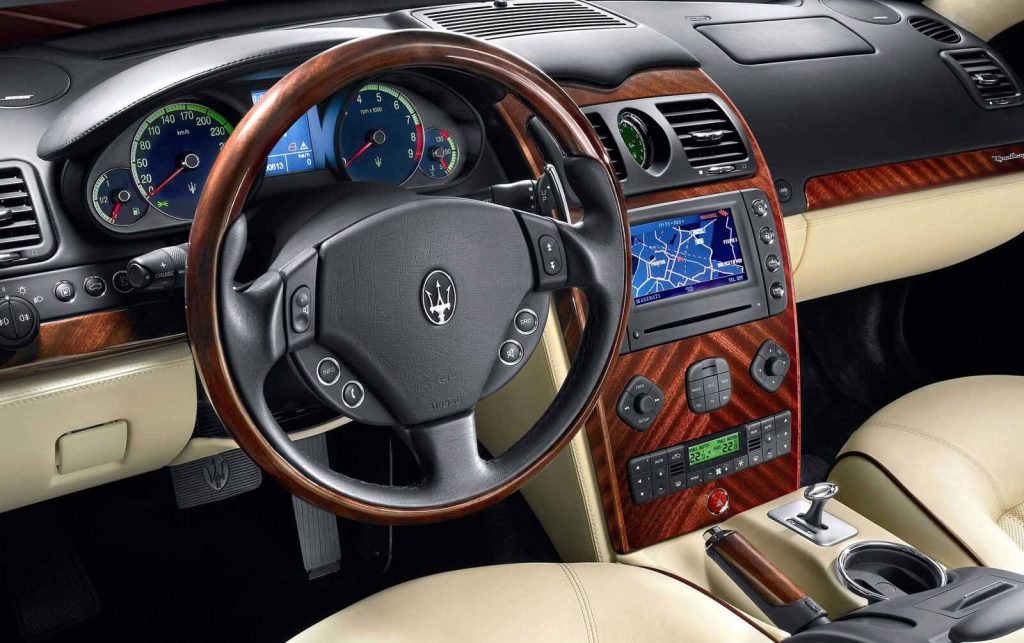
The Sport edition offered reconfigured transmission for faster shift changes and a firmer suspension, seven-spoke 20-inch wheels with low-profile tires that were 8.5 inches in the front and 10 inches in the back, improved brakes, dark-mesh for the front and side grilles and a red accented Maserati badge as a homage to their vintage racing models. Inside the cabin were aluminum pedals, sports steering wheel and the hard surfaces replaced with carbon fiber.
Reliability Lottery
But the issue with handmade Italian cars was still evident with the Quattroporte, as many new owners posted reviews of their purchases. While for the majority, they would report that the luxury sedan performed exceptionally well and was a joy to drive, there would be others who were having a nightmare with it.
Many would find that the car spent more time back at the Dealer undergoing expensive and long running repairs. Malfunctions would result from multiple areas of the car and it seemed it was a bit of a lottery what quality of car you purchased.
These issues would hurt the overall rating of, what was otherwise, an excellent automobile. Not good for a luxury sedan that cost well over US $100,000.




